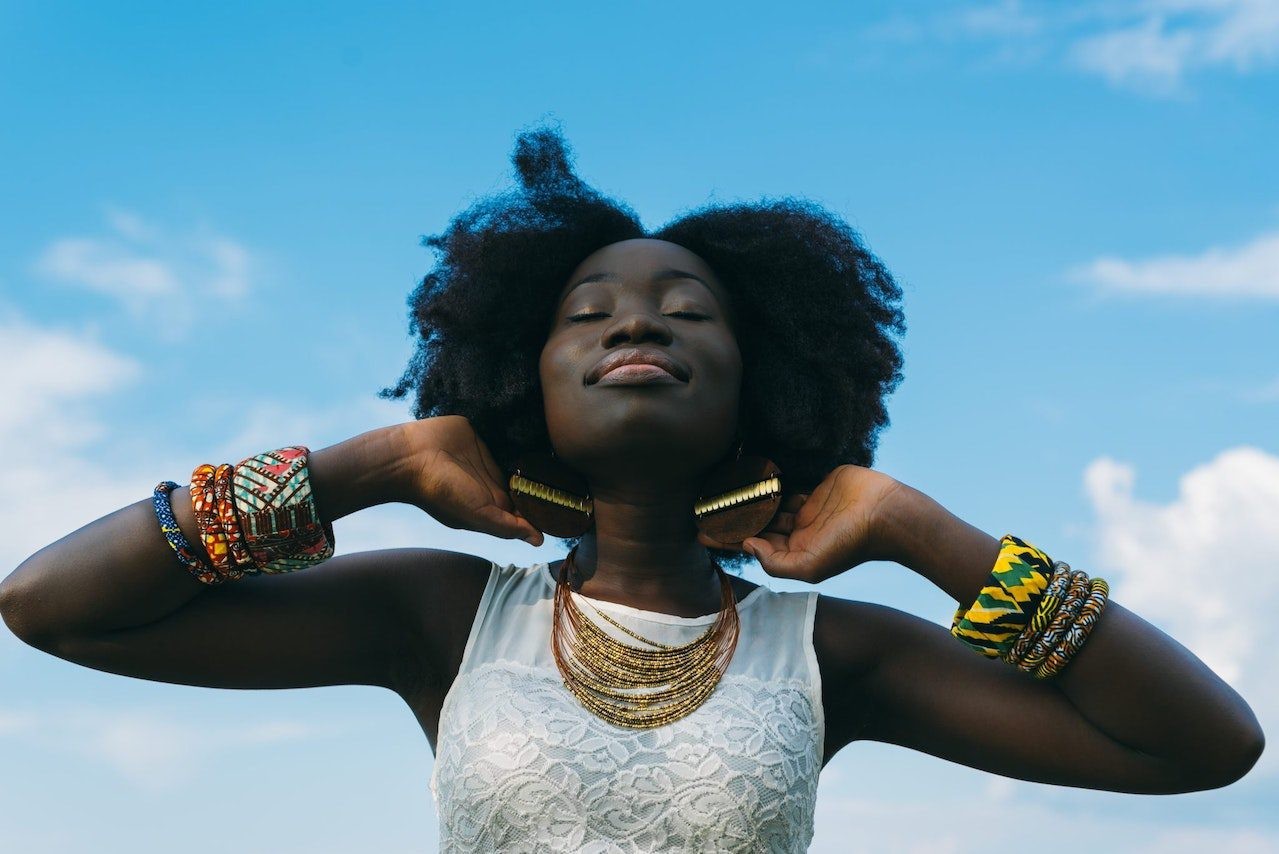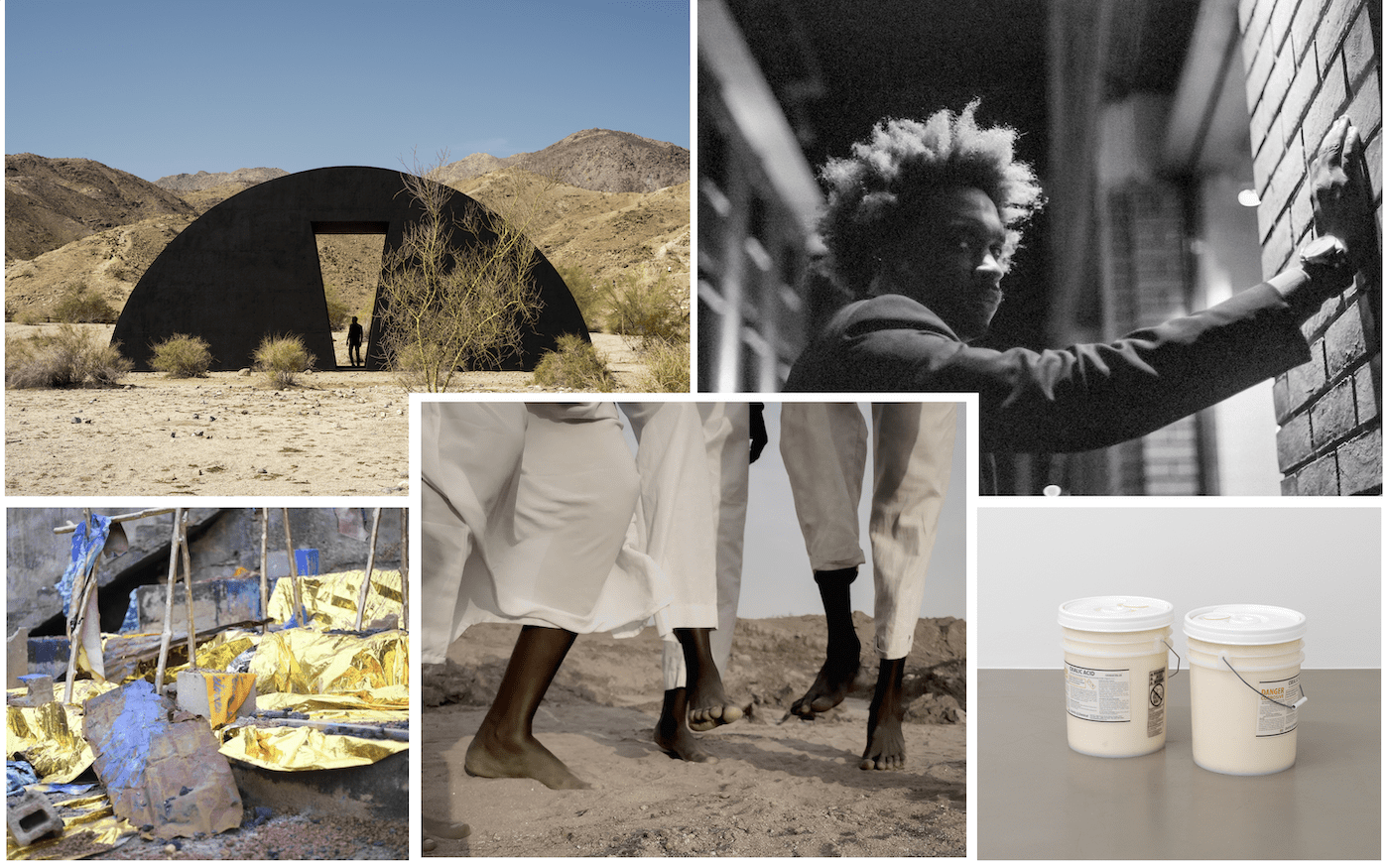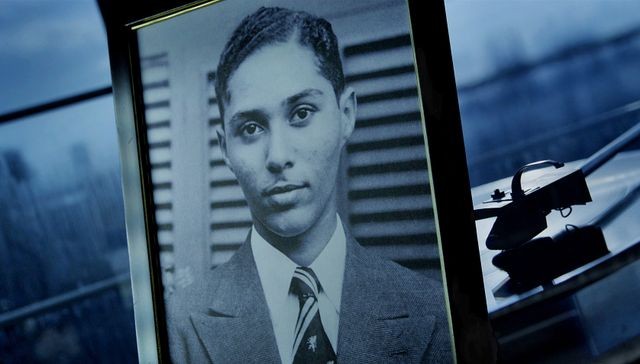Navigating Pain and Possibility

17 May 2023
Magazine C& Magazine
Words Tash Moore
6 min read
Afrofuturism and Afropessimism both seek to step outside of limiting narratives and invite self-awareness into the conversation around Black lives.
Black creatives often feel the acute pain of systemic oppression and discrimination that limits their access to opportunities. In recent years, two movements have been offering important tools for understanding and navigating these complex issues: Afropessimism and Afrofuturism. Through Afropessimism, we can gain insight and permission to express multiple emotions simultaneously. Afrofuturism, meanwhile, encourages us to explore our imaginations even as our physical and intellectual boundaries are being challenged. Here, I look at how those movements help us embrace both pain and possibility.
Afropessimism is a philosophy that focuses on the harsh reality of Black existence in the world, particularly in the context of the aftereffects of colonialism, enslavement, and ongoing white supremacy. It provides a necessary perspective that acknowledges the constant struggles and suffering that Black individuals face, rather than perpetuating false notions of progress or hope. By recognizing the pain and trauma of being Black, Afropessimism can lead to a deeper understanding and empathy for the lived experiences of Black individuals. Afropessimistic expression within civil society suggests that we don’t just focus on solving structural problems, but on ensuring the Black body is protected from gratuitous violence.
In contemporary art, Afropessimism is often expressed through works that center on the pain but also on the simple beauty of “unacceptable” Black lives. Examples of Black masculine queer affection can be found in the photography of artists like Clifford Prince King and Kadar Small. Their works focus on the exiled sexuality of Blaq (Black and queer) folx within the larger Diaspora. The homo- and queerphobia within the colonial evolution of our cultures of origin can be difficult to confront, so it is vital to give voice to experiences that have been historically ignored or silenced, and, more importantly, are not waiting for conflict resolution to be present, sensuous, or joyful. By acknowledging historical pain, contemporary art that engages with Afropessimism opens up spaces for healing and empowerment. However, Afropessimism is not simply a philosophy of despair or hopelessness. Instead, it is a call to action to confront and resist systems of oppression. By recognizing their pervasive and ongoing nature, Afropessimism demands visibility and passions both positive and negative. By centering the pain and struggle of Black life, Afropessimism creates space for justice and liberation, which can in turn fuel a commitment to change.
Another example of artistic expression dealing with how our enculturation collides with the dominant world could be seen in the exhibition PLAY†PREY: A Gospel, which (as the host institution, theMinnesota Street Project, put it) “recounts a relationship between God, the Church, and a queer Black child.” Written and directed by Leila Weefur with music composed by KYN (Josh Casey and Yari Bundy) in collaboration with Sandra Lawson-Ndu, the exhibition was presented in late 2021. “Showcased as three separate films playing simultaneously, Weefur’s installation contemplates the structures and rules imposed on pleasure, play, and sexuality under Black Christianity,” explained the press release.
Often, Black people who reject respectability politics are either shunned and ridiculed – one example being how the Black American middle class treats the working and impoverished classes – or relegated to social/physical death. Being treated as a pariah or even murdered to maintain the social order can happen to any Black person regardless of social status, sexuality, or gender, but different types of violence are evident for each identifier. To illustrate normalcy and demonstrate humanity, Afropessimism in contemporary art violates these codes of conduct and asks why they exist at all – rather than punishing the self-aware Black person for existing.
Afrofuturism is an opportunity to tackle the same despair yet inject ourselves into a future we were never intended to reach – to continue reclaiming our existence as well as our trajectories back from post-colonial hangovers. Afrofuturism is a cultural aesthetic, philosophy, and critical framework that emphasizes the experience and creativity of Black people in a future global context. Afrofuturist stories combine elements of science fiction, history, and speculative fiction to explore the experiences of Black people in the world, including racism, alienation, and repression, while also celebrating Black culture and history. There is less emphasis on emotions, reckoning with our collective condition, or demonstrating our humanity; the focus rather shifts to the liberation of our imagination.
Artists such as Kelsey Lu, a “femme-inist” (The Color Pynk, Omise’eke Natasha Tinsley) expressing post-colonial gender expansion within classical music, who’s based in Los Angeles challenges the foundation of creation, while speaking with The Guardian, before they ever bring their bow to their instrument:
“An education in classical music is, in many ways, rooted in white patriarchy. Lu would soon discover how it manifested even in seemingly trivial details about how music works. Odds are we’ve all heard instruments tuning up to middle A, but Lu explains there are numerous theories about why this is the universally agreed tuning note, and why it’s at a frequency of 440 hertz. It was a decision, Lu tells me, made by the International Organisation for Standardisation – ‘which, you know, was just a bunch of white people’.
“This takes us […] to Hydroharmonia. Through the project, Lu has been working with a different frequency instead. ‘Using 432 hertz is like a reclamation of sound frequencies,’ they say. ‘Taking back the power. In my research, I’ve found that 432 is said to be mathematically consistent with the patterns of the universe – and there’s evidence of that being healing and therapeutic.’ The basic idea is that 432 hertz is said to be softer for us to process, and has a positive impact on relaxation and health (though this is a much-disputed theory).”
If Afropessimism is the belief that the world is inherently and irrevocably racist and that Black people will always be oppressed, then Afrofuturism is the idea that Black people can create their own futures, free from the weight of the past. So how do these two concepts work together? Well, Afropessimism can be seen as a way of understanding the world and the racism that exists in it. And Afrofuturism is a way of creating a future that is free from that oppression. By combining the two, we can create a world that is inclusive and just for all Black people.
Tash Moore is a bicoastal Detroit booster, social entrepreneur, and activist who is deeply passionate about promoting diversity & inclusion. She was a coordinator of the 2018 C& Critical Writing Workshop in Detroit.
Read more from
Read more from






